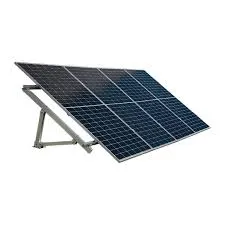Comparing Bifacial and Monofacial Solar Panels for Maximum Efficiency and Performance
Bifacial Solar Panels vs. Monofacial Solar Panels A Comprehensive Comparison
As the demand for renewable energy rises globally, solar power has become one of the most prominent sources of sustainable energy. Among the various solar technologies available, bifacial and monofacial solar panels have gained attention for their efficiency and performance. While both technologies harness sunlight to generate electricity, they differ significantly in design, efficiency, and installation, making it essential to understand their advantages and drawbacks.
Understanding Monofacial Solar Panels
Monofacial solar panels are the traditional type of solar panels that have a single layer of photovoltaic (PV) cells. They are designed to capture sunlight that directly hits the front side of the panel. Typically, these panels are installed on rooftops or ground-mounted arrays, facing south (in the Northern Hemisphere) to maximize sunlight exposure. With a typical efficiency rating ranging from 15% to 22%, monofacial panels have proven effective in generating electricity, especially in regions with direct sunlight.
However, the limitations of monofacial technology are evident in certain conditions. They only absorb sunlight from one angle, which can lead to inefficiencies, especially in locations where shading occurs or where the sun's position varies significantly throughout the day or year. Furthermore, the total energy output is less when the ground beneath the panels is not optimized for energy reflection.
Exploring Bifacial Solar Panels
Bifacial solar panels represent a significant advancement in solar technology. Unlike monofacial panels, bifacial panels have PV cells on both sides, allowing them to capture sunlight from both the front and the rear. This design enhances their energy generation capabilities, especially in environments that encourage light reflection, such as snowy areas, sandy terrains, or reflective surfaces.
bifacial solar panels vs monofacial

The efficiency of bifacial panels can be substantially higher, often exceeding 20% to 25%, depending on installation conditions and the environment. Additionally, bifacial panels can allow for an increase in energy output of up to 30% compared to monofacial panels due to their ability to utilize reflected sunlight. This makes them an attractive option for large-scale solar installations, particularly in open fields with optimal ground materials.
Installation and Cost Considerations
When it comes to installation, bifacial panels require specific considerations. Due to their dual-sided nature, installations may need to be elevated—this allows space for sunlight to reach the rear side. This elevation may increase initial setup costs, including mounting systems and structures. On the other hand, monofacial panels have a more straightforward installation process, typically involving simpler mounting systems.
Cost is another critical differentiator. While bifacial panels often come with a higher upfront cost due to more advanced technology and materials, the potential for increased energy generation can lead to better long-term returns on investment. Monofacial panels may have lower upfront costs, making them attractive for homeowners and smaller installations but may not generate as much electricity over time.
Conclusion Choosing the Right Technology
Selecting between bifacial and monofacial solar panels ultimately depends on various factors, including location, budget, and energy needs. For regions with abundant sunlight and ideal reflective conditions, bifacial panels can provide significant benefits and higher energy production. Conversely, in urban or shaded environments, monofacial panels may offer a more practical and cost-effective solution.
As technology continues to evolve, both types of panels contribute to the growing adoption of solar energy and the pursuit of sustainable energy solutions. Understanding the differences between bifacial and monofacial solar panels empowers consumers and businesses to make informed choices that align with their energy goals. Ultimately, the journey toward renewable energy is paved with innovations that cater to diverse needs, and both bifacial and monofacial panels play a crucial role in this transition.
-
Unlocking Energy Freedom with the Off Grid Solar InverterNewsJun.06,2025
-
Unlock More Solar Power with a High-Efficiency Bifacial Solar PanelNewsJun.06,2025
-
Power Your Future with High-Efficiency Monocrystalline Solar PanelsNewsJun.06,2025
-
Next-Gen Solar Power Starts with Micro Solar InvertersNewsJun.06,2025
-
Harnessing Peak Efficiency with the On Grid Solar InverterNewsJun.06,2025
-
Discover Unmatched Efficiency with the Latest String Solar InverterNewsJun.06,2025







